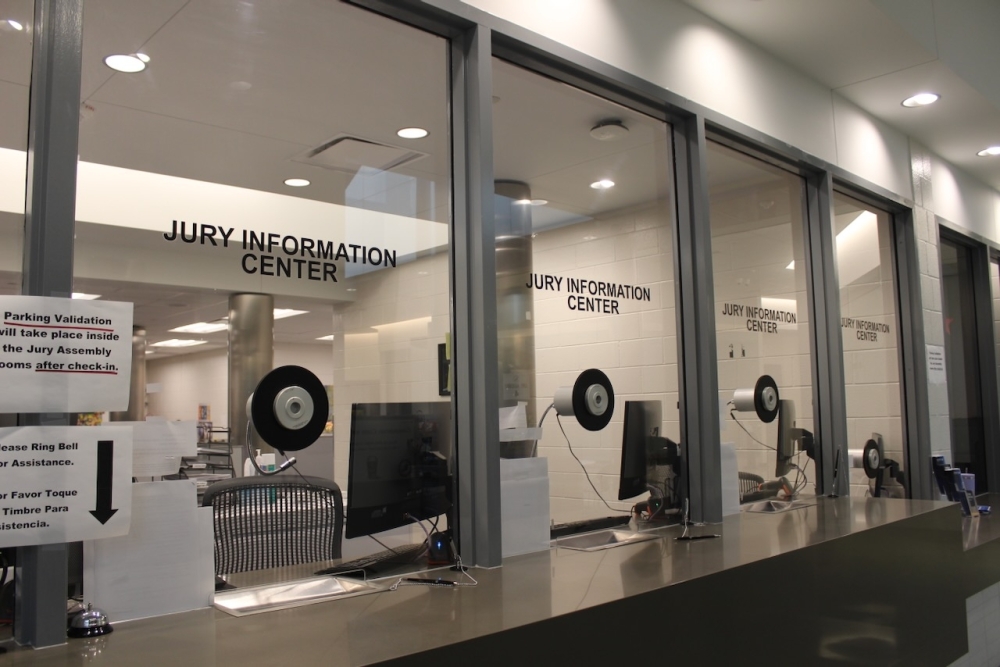Editor's Note: Changes have been made to the article to reflect clarity, accuracy.
District Clerk Marilyn Burgess said the county’s justice system is in need of a larger and more inclusive juror pool.
“We want our jury panels to reflect the diversity of Harris County, and currently they do not,” Burgess said. “We are underrepresented in the African American community by about 5%, underrepresented in the Hispanic community by 7%, and we’re underrepresented in young people by about 5%.”
Burgess said her office is working on its goal to not only improve the low jury appearance rate that dropped after the COVID-19 pandemic, but to target communities of color who have received jury summons based on the need for fair trials and diverse perspectives in jury deliberations, she said.
“Everybody has different life experiences and we need all those different life experiences brought to the deliberation table when a panel is deciding the outcome of a trial,” Burgess said. “When you do have a diverse panel, they debate the facts of the case longer, inaccurate statements are corrected, biases and racial slurs are not tolerated. That leads to fairer outcomes as well as an increased appearance of impartiality and confidence in our justice system.”
Digging deeper

Harris County struggles with not only achieving adequate diversity among the people who serve on its juries, according to a 2020 study conducted by the district clerk’s office, but the number of people who appear is also low. The study by consulting firm January Advisors found that nearly 80% of people who received a summons from 2018-2019 did not show up for jury service.
The study also found that jury service no-show rates are higher in ZIP codes that are predominantly African American or Latino. While Harris County has at least 60% of eligible jurors who identify as non-white, the study found that the majority of people who show up for jury service are white. Burgess said getting more people out for jury service in general is her office’s goal, with an appearance rate of at least 30%.
“We want the numbers up altogether, not just in the diversity areas,” Burgess said. “While we’re underrepresented in minority and young people, the bigger picture overall is appearance rate, so that’s our primary focus right now.”
Burgess acknowledged several factors that affect turnout rates, including lack of transportation, child supervision issues while taking a day off from work and other workplace concerns. The study showed that nearly 40% of survey respondents identified loss of income or getting time off from work as their top barrier to jury participation.
Explained
The process of serving on a jury starts when a person receives a summons in the mail to appear for jury selection. The summons requires a person to show up for jury screening on a specific date and time. Burgess said the county’s online preregistration website was introduced in 2020 with features to assist the process, including:
- Preregistering within seven days to shorten the registration process on the day to appear in court
- Collecting email and cell phone numbers to send reminder notices a week before jury service
- Sending text message reminders the day before jury service
The district clerk’s office can use the preregistration information to accurately predict how many people will show up and even cancel jurors if enough people are scheduled. The ability to notify potential jurors through email if their service is cancelled and to give jurors the option to reschedule online is also a function of the online preregistration process.
Zooming out
Several changes to increase juror turnout in Texas have taken effect since Burgess first took office in 2019. House Bill 3474 passed in the Texas Legislature, and since September 2023, the first day of service pay for jurors increased from $6 to $30. Subsequent day pay rose from $40 to $58. A new payment method was also introduced in 2023, allowing jurors to be paid through prepaid debit cards instead of checks.
In a nutshell
Burgess said that while the juror appearance rate has improved slightly since the COVID-19 pandemic dip, her office will continue to work on initiatives to improve the experience for citizens.
“We’re not unique in Harris County. It’s a problem across the nation, not just even in Texas. Everybody’s got the same issue,” Burgess said. "Jury duty has a bad rep, and that’s part of the problem. We just have to get the word out that it’s an enlightening experience. You want to see how your government works. This is a way of seeing it from the inside and being a part of the decisions that affect people’s lives.”





